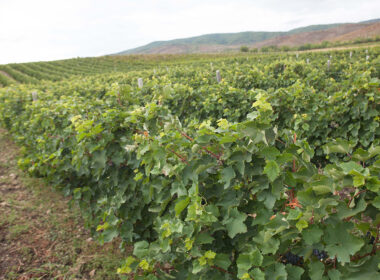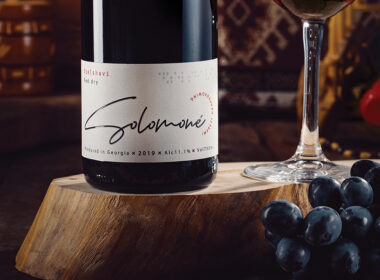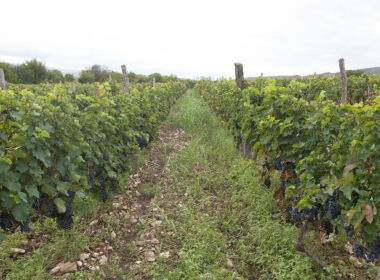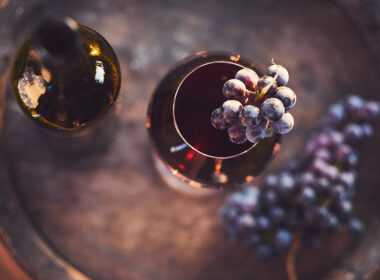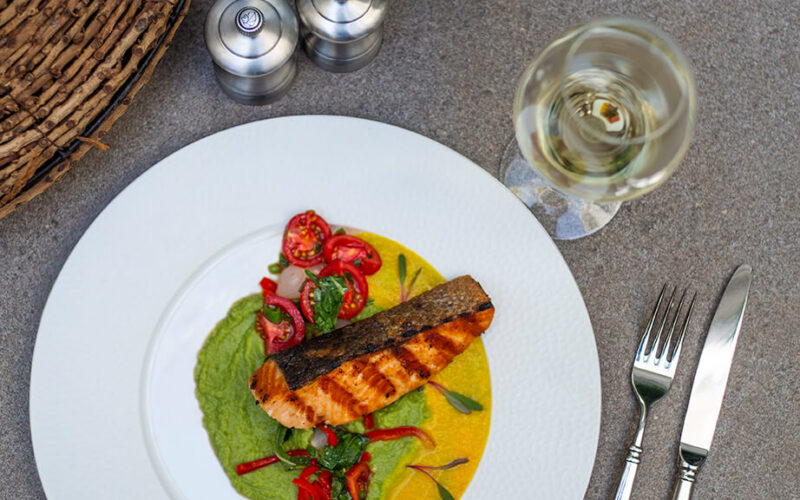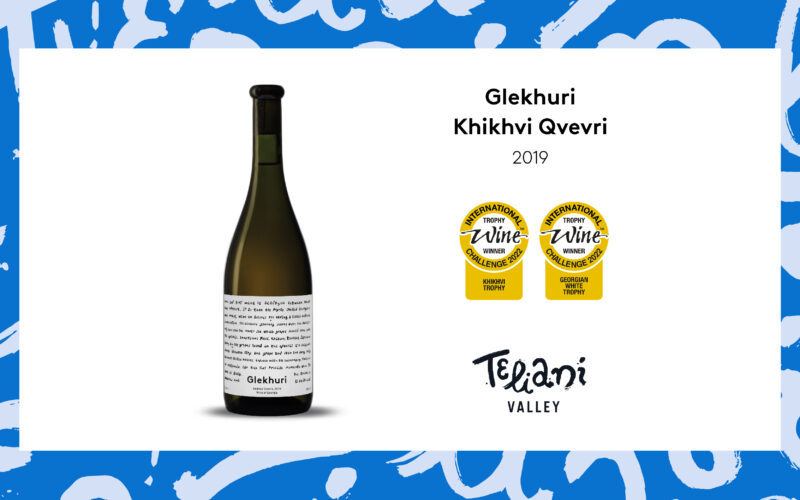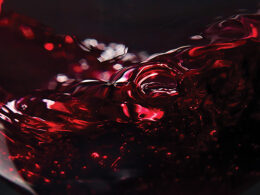Georgian sommeliers view qvevri wine as a sacred beverage that we introduce and present to a customer. This wine is part of our country’s, nay, whole humankind’s history, and we take great pride in it. Whenever you order a qvevri wine, you merely order an alcoholic beverage, but a cultural drink that is rooted in ancient history of Georgia.
This wine is part of human heritage. It was created, when no state existed. There were only tribesmen, inhabiting territories, like present-day Kartli, where the name “Sakartvelo” comes from. They domesticated vine (Vitis Vinifera) and the wine we consume today is precisely the domesticated Vitis Vinifera and not Visit Labrusca (wild vine species). We tell this story to our customers, who might be tasting qvevri wine for the first time in their lives, especially qvevri white wines, which significantly differ from widespread classic white wines.
Georgians took great care to preserve qvevri culture, so we now have an ancient and authentic way of making wine in a historical vessel.
Qvevri – a unique vessel
Qvevri is the mother of wine, hence its cone shape, reflecting the connection to both the cosmos and human physiology. Since the ancient times, grape juice was poured into it to later birth good wine. Unlike other vessels (Greek amphorae, Roman dolia), Georgians have always buried qvevri underground, where temperature and humidity are optimal for making wine. But right conditions were not the only reason: historically, Georgia has never had a peaceful period. Enemies would often attempt to wipe out our culture, and a few things were as tragic to Georgians as destroyed vineyards, broken qvevri, and spilled wine. Qvevri and making wine in it is a part of our culture, our identity and we always took special care of this vessel. Each bottle of qvevri wine from a family-owned winery or a big production is filled with this history, tradition, and culture. It is our message in a bottle sent into the world dominated by classic wines.

Qvevri and churi: Wine vessels and cuisines of Eastern and Western Georgia
Classic wines established themselves in Georgia from the 19th century. Before Aleksandre Chavchavadze and Ivane Mukhran-Batoni introduced these wines to our country, all of the wines in Georgia were made using qvevri or churi. Even though both of these vessels are Georgian, the former being used in Eastern Georgia and the latter – in Western Georgia, the process of making wine in them is very different. Grapes in Western Georgia have thinner skin and they reach maturity later, due to humidity and colder climate. Wine from these grapes, made in churi, have a milder body, piercing acidity, aromatic and thinner to taste. These wines pair very well with the cuisine of Western Georgia, which is light and consists of dishes made with vegetables, cheeses, and flour. Wines from Eastern Georgia, on the other hand, have fuller bodies that complement the region’s cuisine, rich with meat dishes.
At times, it is hard to distinguish churi wines from classic wines, because, when making it, dregs only make up 30%, with maceration (the contact of dregs and juice) lasting until the end of fermentation, or a maximum of 1 month, after which the wine is separated from chacha. The traditional Eastern method is a different story – 100% dregs and 6 months maceration.
Georgia has an 8 thousand-year-old culture of making wine. It is impossible to have such a noble beverage, without having a well-developed cuisine. So, we are not only the homeland of vine and wine, but of great pairings of food and wine, where mother nature intentionally divided the country into East – with its highly structural dishes and appropriate wines, and West – with dishes rich in spices and light wines.
Aleksandre Chavchavadze is also credited with initiating the registration of Protected Designations of Origins (PDO) in Georgia. Historically, the notion of PDOs began in France, specifically in Bordeaux, as a way to classify grape varieties and their confluence with terroirs. In 1855, high class terroirs were officially ranked, resulting in the establishment of top châteaux, known and premier cru or First Growth: “Château Margaux”, “Château Latour”, “Château Mouton Rothschild”, “Château Lafite Rothschild” and Château “Haut-Brion”. The Old World (Italy, Spain) followed suit, classifying their wine as it was becoming a national source of income.
Georgian soon joined this big “revolution” that started in Bordeaux. Aleksandre Chavchavadze, who was an avid wine advocate, had relevant education and a solid network, joined forces with winemakers to research soils (this data is still relevant). He commissioned a famous winemakers Antoine Mosano to visit Georgia, and decided to register the first PDO “Tsinandali”. In 1886, “Tsinandali” was officially registered as the first PDO wine in Georgia. Unfortunately, due to the tragic death of Aleksandre, he was not there to witness this crucial event.
Today, there are 24 PDOs registered in Georgia.
Georgian qvevri wine pairing with European dishes
I find qvevri and churi wines especially interesting, because of the wide variety of aromas these wines have, pair greatly with local, as well as European dishes. Today, we will discover these pairings: exceptional European dishes of Tbilisi Mariott and Georgian qvevri and churi wines.
Qvevri Kisi with duck liver pâté, stuffed with cherry butter & citrus melted cheese served with blackberry & peach jam, grilled rye baguette & sweet potato.
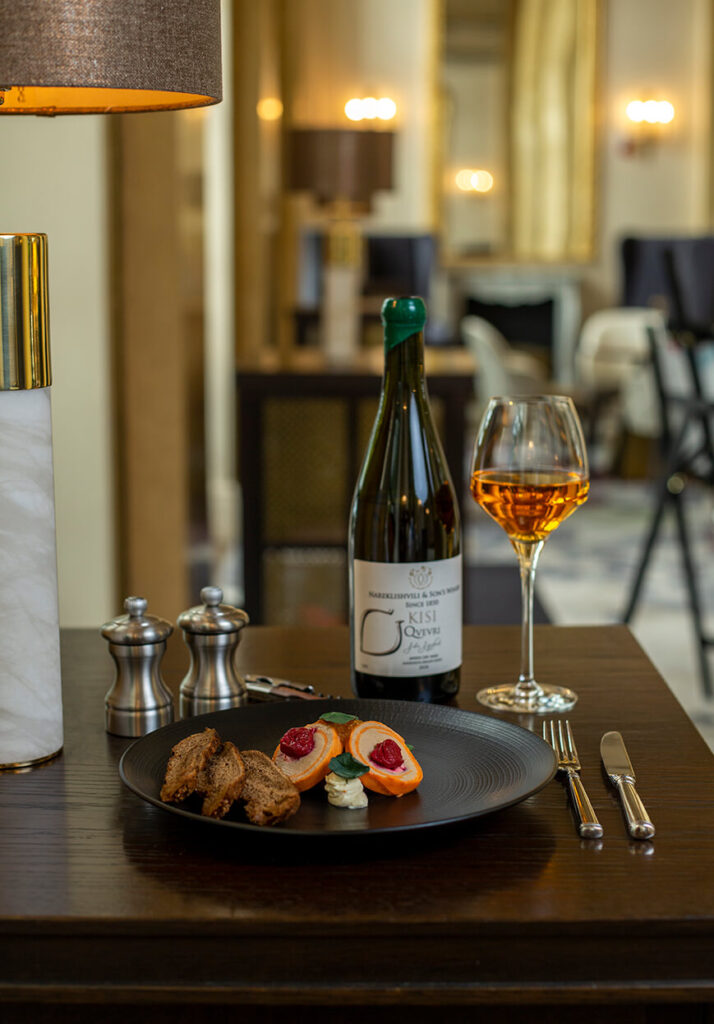
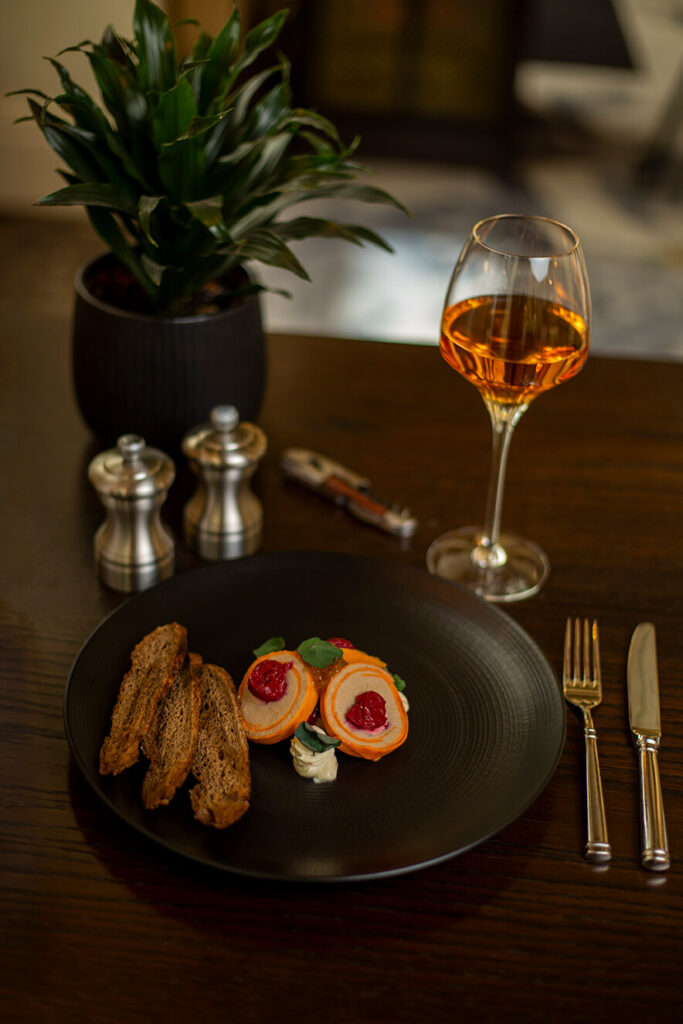
The dish contains sweet elements, so characteristic of Belgian cuisine (also actively used in French cuisine). Belgians were the first to include sweet components in their dishes because they neutralise the umami taste. White qvevri wines pair exceptionally well with these dishes. Tannins and the delicate acidity of these wines go well with liver dishes that always have an umami taste. It is worth mentioning that white wine with tannins is unique to Georgia. Pairing qvevri Kisi with duck liver pate gives a third effect: the transformation of liver umami and Kisi aromas, letting us first feel the umami, then fruit, umami again, all with a lasting finish. Liver pates, foie gras, and qvevri wines are already being paired in leading restaurants around the world because these wines greatly complement the thin structure of these dishes.
Otskhanuri Sapere and grilled chicken, with barley mushroom risotto, horseradish & celery mousse & sweet-chili berry sauce
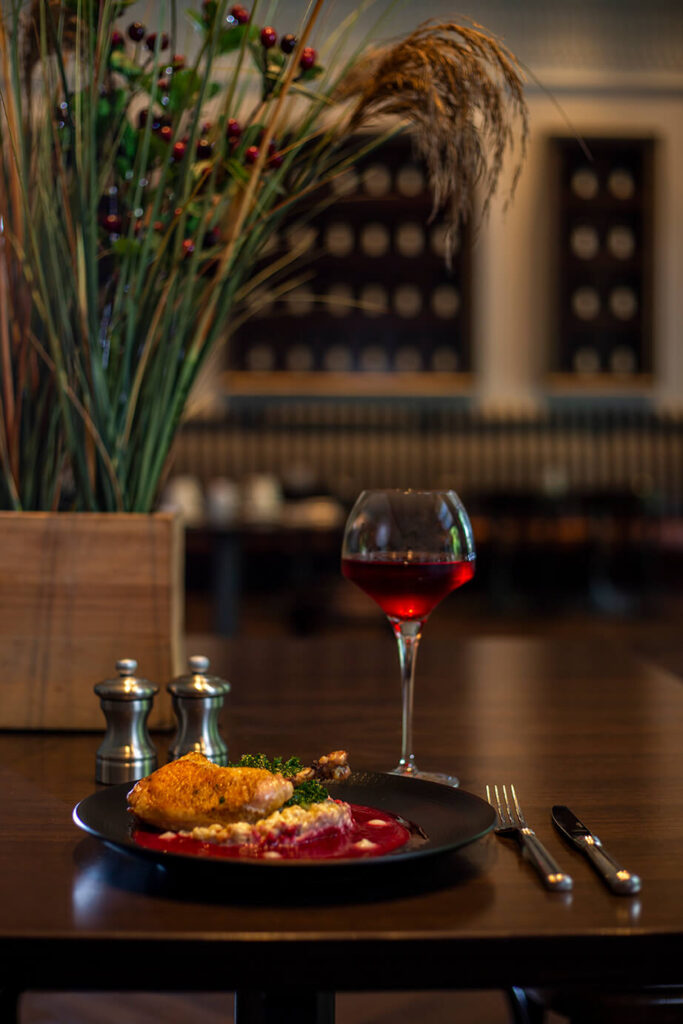
The practice of poultry dish preparation and their subsequent pairing with wine is well developed in Western Georgia. So, when it comes to choosing wine for these dishes, I always go for light bodied red wines from Western Georgia, which pair exceptionally well with dishes cooked with sauces rich in spices (red tkemali, blackberry chrianteli).
Westerners actively use berries and red fruits as sauces for their meat dishes. Imeretian wines – for instance, a rosé made from Aladasturi or Dzelshavi, or Otskanuri Sapere, full-bodied and with high tannins, made in churi – go best with these dishes.
Tsitska Tsolikouri and salmon steak, with rainbow cherry tomato salad, asparagus, celeriac puree & orange sauce.
When we think of seafood, we think about light, delicate and acidic wine that neutralises the savouriness of the fish. Therefore, we choose qvevri wines from Shida Kartli region (Mukhrani or Ateni) or Imeretian wines, made in churi – Tsitska Tsolikouri, Krakhuna that match brilliantly with salmon dishes. We can also use Adjarian and Gurian Tsolikouri, made in qvevri, or white wine made from Chkhaveri. These wines are best for those, who have no yet tried them with seafood.
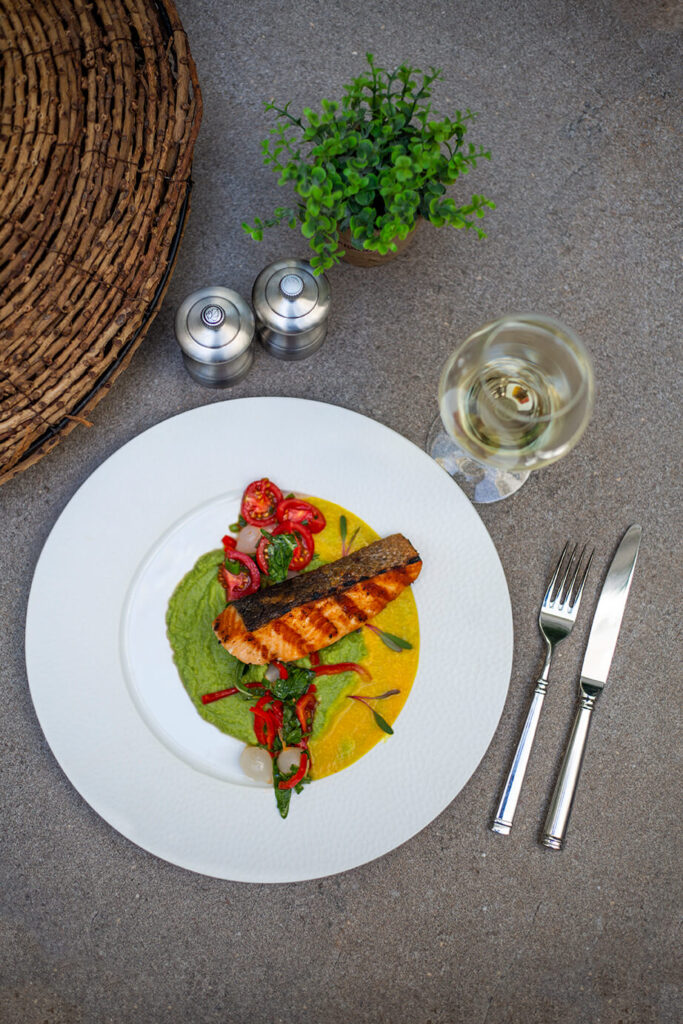
I must say that Adjara (including, high mountainous Adjara – Khulo, Keda) has good preconditions to grow Tsolikouri. Located high above sea level, these places have great potential. Some of the world’s best wines are produced in Chile and Argentina, which are also high above sea level.
Despite having a vast number of rivers and being surrounded by the sea, seafood culture is not very developed in our country. And sadly so, because, for me, more attention has to be paid to seafood and wine pairings, given our vast access to the sea.
And lastly, I want to suggest stepping out of the classic and well-established combination of seafood and white wine and successfully pair the fish with red wine. For this to work, it is crucial to choose the right type of fish and the right method of its cooking. I once asked my colleague and a Michelin star chef to cook salmon in a way that would enable us to pair it with red wine. He made salmon with beetroot sauce that could only be paired with red wine and nothing else because the sweetness of the beetroot and its acidity would inevitably “murder” white wine. It was a truly magnificent match.
Saperavi and baked pork fillet, with cheese crust, dijon mustard sauce & cranberry jam
The various beefs, local as well as Japanese wagyu, American black Angus are very popular in Georgia. Georgian wine has to be correctly selected for each of these.

Red meat, as well as pork dishes, are well paired with our flagship variety – Saperavi. This wine has a distinct terroir expression. Saperavi wines differ according to the region and vineyards they are produced in. For instance, Saperavi from Papris Mindvrebi (Mane Fields), from Khashmi, or highland Saperavi from Akhmeta-Argokhi – all are very distinct and interesting. I would pair black Angus with full-bodied Saperavi from Papris Mindvrebi or acidic Saperavi from the highlands of Argokhi that complements any high-quality meat.
Georgia has a well-developed meat culture. Take, for example, Racha ham, registered as a Protected Designation of Origin. Pairing it with wine requires a bit of a revolution, i.e. “drying” Khvanchkara (it is naturally semi-sweet). Some young winemakers in Racha are already starting this revolution, making dry wine from Mujuretuli and Aleksandrouli grapes.
The latest trend, however, is our winemakers’ attempts of making sweet qvevri wines. These are very rare, so there is not a lot to talk about, but judging from the wide variety of aromas that qvevri wines have, making Port wine style wines in qvevri could potentially become a new trend in sweet wine production.

